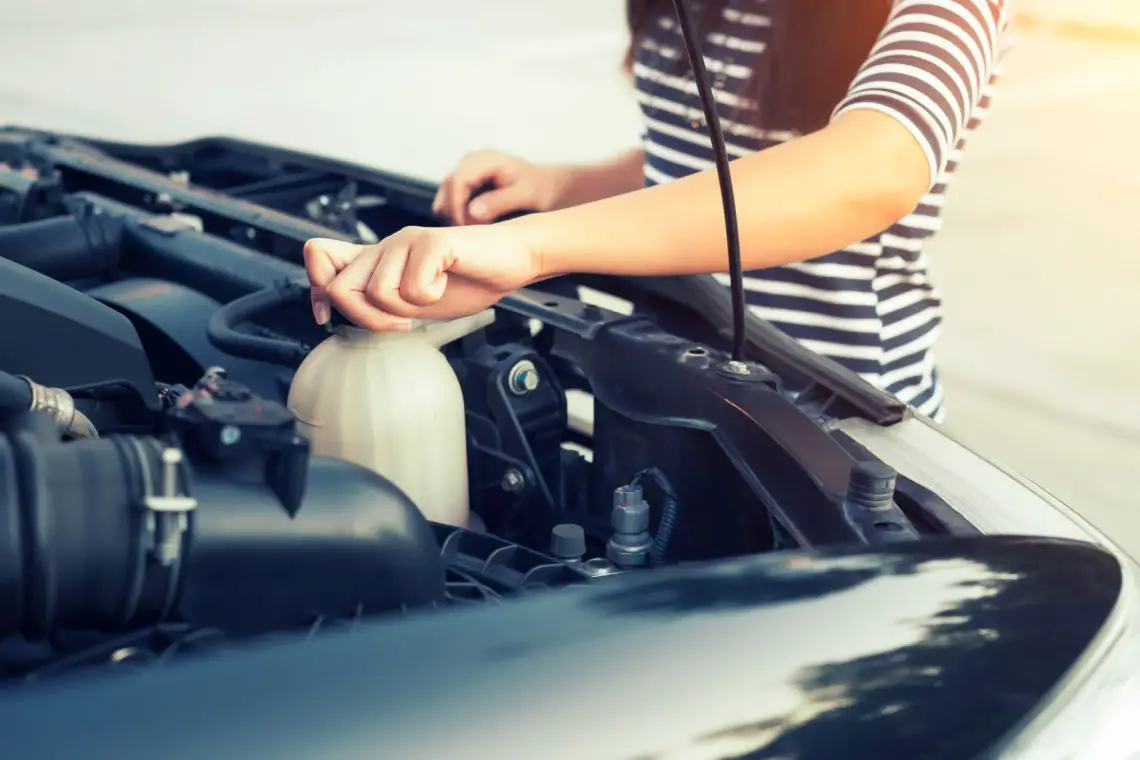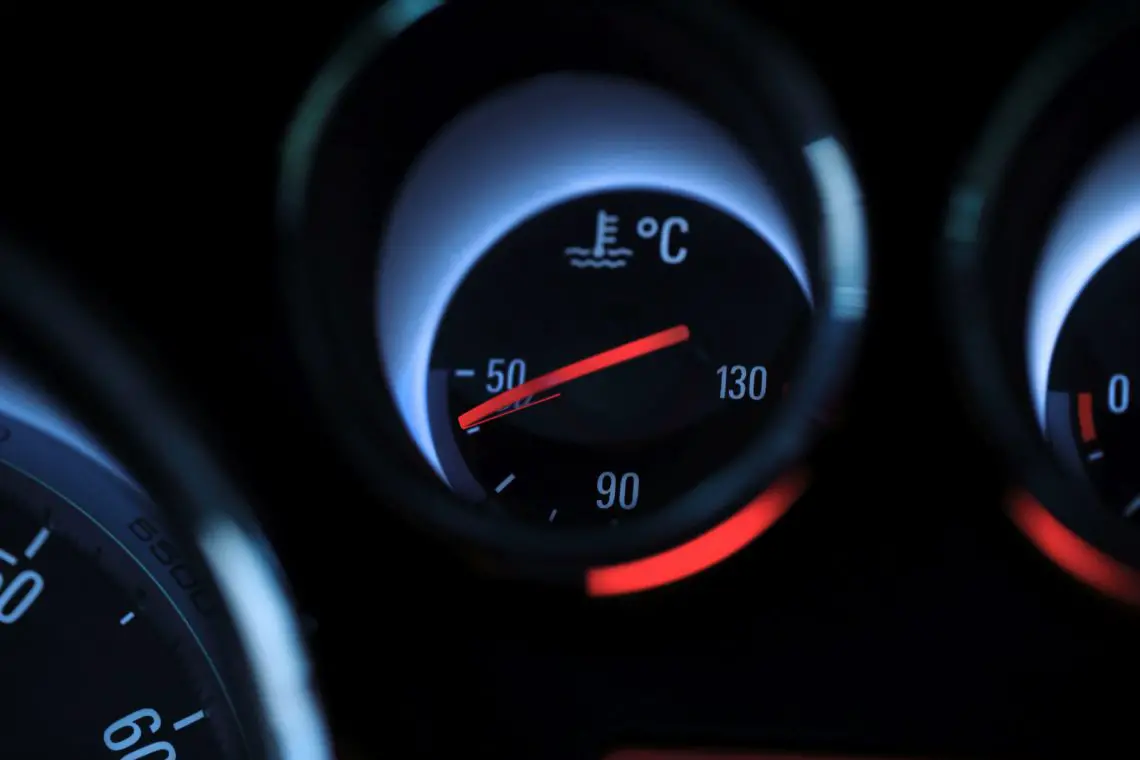Coolant leaking
Different ways
Coolant can be lost in many ways. The cooling system may leak, for example from the coolant reservoir, radiator or one of the hoses. Either the water pump or the head gasket is leaking. You may even have forgotten to properly tighten the reservoir cap.
Car leaks coolant
Before driving, check to see if there might be a puddle under the car. This can of course be rainwater, but also oil or coolant – a signal that there is a leak somewhere. Do not continue driving until the temperature of the engine has risen too high, because then engine damage can also be caused. Check the coolant level regularly and go to the garage if you are not sure.
Text continues below the photo

Coolant leaks when standing still
If your car has been sitting for a while and there is a pool of coolant under it, one of the cooling system’s rubber hoses may have dried out and cracked. Maybe animals have bitten the snakes. Leaking coolant leaves its mark, so follow the trail to the leak and replace the leaking hose. Or have leaking parts replaced at the garage – then top up the cooling system before you drive to the garage.
EGR cooler leaking coolant
The EGR (Exhaust Gas Recirculation) returns some of the exhaust gases from a diesel engine to the engine to reduce nitrogen oxide (NOx) emissions. This happens at very high temperatures, which is why the EGR is connected to the cooling system. Due to high sulfur contents in biofuels, minimal leakages can occur in the EGR over time. These leaks only occur after the engine has been stopped. Then the coolant can run into the combustion chamber, which can cause major engine damage. Corrosion can also cause leakage, so it is important to always use the correct coolant.
Coolant leaking through head gasket
If you notice that the engine is losing coolant, but you see no signs of a leak, take a look at the exhaust and inside the oil filler cap. Is there white smoke coming out of the exhaust while the engine is warm and do you smell a peculiar smell? And do you see a mayonnaise-like substance in the oil filler cap? Then the head gasket is probably leaking. As a result, coolant enters the engine oil and the so-called sludge is created, which you can see under the filler cap. If you drive too long with a leaking head gasket, the engine can be seriously damaged. So go quickly to the garage.
LPG evaporator leaks coolant
The evaporator of the LPG installation must be cooled to make LPG (a liquefied gas) gaseous for combustion in the engine. Therefore, the cooling system also cools the LPG evaporator. If no coolant circulates, the evaporator cannot fulfill its function and the car can no longer run on LPG. One way to check if the evaporator is leaking is to drive for a while with topped up coolant on petrol. If the coolant level doesn’t drop and it does drop when running on LPG, then the LPG evaporator is probably leaking.
Text continues below the photo

Water pump leaking coolant
The water pump must circulate the coolant in the cooling system to cool the engine. A bearing and a seal ensure that the pump runs smoothly and that no liquid leaks out. An old water pump can start to leak. As a result, not only does the level in the cooling system drop, but if the coolant enters the bearing, it will also run less smoothly. This can cause all kinds of damage to the engine.
Top up coolant
You can easily check the coolant level and top up if necessary. Please consult your car’s owner’s manual first. Only add coolant when the engine is cold, as the system is under pressure and opening the radiator or expansion tank filler cap may allow hot coolant to spray out. The correct level is indicated on the expansion vessel when the engine is cold. Too low is not good, but also not too high, because then the pressure in the system will rise too high, with all the associated leakage risks.
Coolant leaks, what is the cost?
Of course you can always top up coolant, but that is symptomatic. That will cost you a bottle of coolant at about ten euros per litre, but that does not solve the problem. A relatively economical way to stop leakage is to add a special additive, such as Lindemann Radiator & Block Stop Leak, Wynn’s Radiator Stop Leak and Cooling System Stop Leak, Radiator Stop Leak from Toolstation or Coolant Leak Repair from K-Seal. Just check the internet. Costs around two to three bucks.
If you continue driving with a leaking cooling system and your engine overheats, extensive engine damage can occur and the costs are much higher. Take measures as soon as possible in the event of a leak in the cooling system.
Coolant is not a nice stuff
Coolant is junk. About half of it consists of water, the other half is antifreeze and additives, such as anti-foaming and anti-corrosion agents. The antifreeze part is ethylene glycol. This clear and slightly viscous liquid smells sweet, but is highly poisonous. Therefore, you should definitely keep coolant out of the reach of children and animals.
